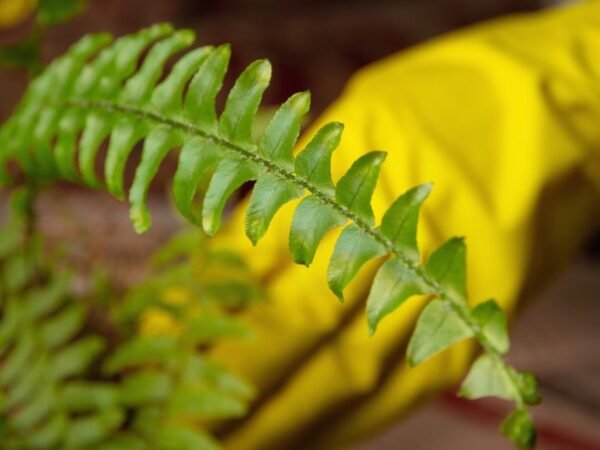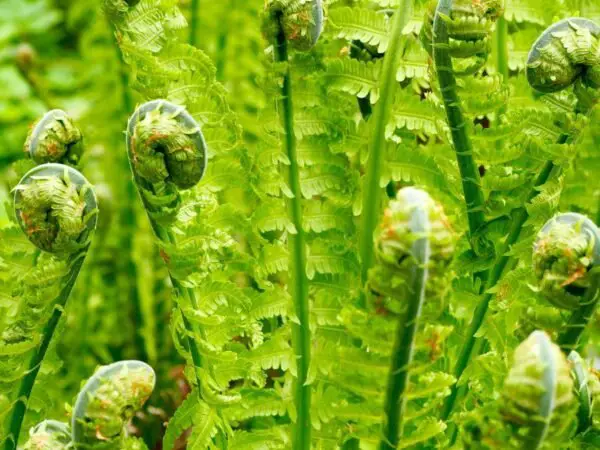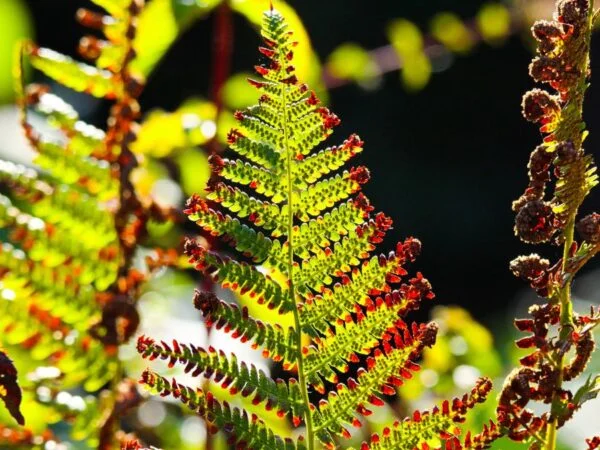
Are you wondering, "How often should you water ferns?" You've come to the right place for guidance on nurturing your ferns.
Ferns thrive in consistently moist soil, but overwatering can lead to root rot, while underwatering can cause wilting. Generally, aim to water your ferns when the top inch of soil feels dry to the touch. This might mean watering every 1-2 weeks, but frequency can vary based on factors like humidity, temperature, and pot size. Always adjust your watering schedule based on the specific needs of your fern species and the conditions in your environment.
For more tips on caring for ferns and creating the perfect conditions for these delicate plants to flourish, explore our comprehensive guides on fern care, including insights on light requirements, soil types, and common pests and diseases to watch out for. Your ferns will thank you for the extra attention to detail, avoiding excess water!
Key Takeaways
- Watering Frequency: Adjust the watering frequency of your ferns based on their specific needs and environmental conditions.
- Proper Techniques: Use proper watering techniques such as watering from the bottom and avoiding waterlogging to keep your ferns healthy.
- Signs to Watch: Monitor your ferns for signs of dehydration like wilting or browning fronds to water them promptly.
- Optimal Schedule: Establish a consistent watering schedule for your ferns, considering factors like humidity levels and soil moisture.
- Prevent Issues: Prevent common watering issues like overwatering by allowing the soil to dry slightly between waterings.
- Healthy Growth: By following best practices in fern care, you can ensure your ferns thrive and remain vibrant.
Understanding Fern Care
Placement Essentials
When caring for ferns, ensure they are placed in areas with indirect sunlight to prevent scorching. Avoid drafty spots and heating vents, which can harm the delicate foliage. Consider mimicking their natural habitat by choosing a location with ample shade and moisture.
Humidity Needs
Maintain a high humidity level of 50-80% for your ferns to thrive. Increase humidity using methods like a humidifier or pebble tray placed near the plants. Regularly mist the ferns to create a humid environment similar to their native surroundings.
Watering Guidelines
Water your ferns every 4-5 days during summer when they require more hydration. In winter, reduce watering frequency to every 7-10 days to prevent overwatering. Opt for bottom-up watering to ensure the roots receive adequate moisture without saturating the soil.
Feeding Tips
Fertilize your ferns sparingly to prevent nutrient buildup, which can harm the plants. Use a balanced liquid fertilizer diluted to half strength during the growing season for optimal growth. Feed your ferns strategically to support their health and vitality.
Watering Frequency for Ferns
Environmental Factors
Monitor the temperature around your ferns, aiming for 60-75°F. Protect them from sudden temperature changes and drafts. Consider air quality and circulation in the room where your ferns are placed.
Seasonal Adjustments
Adjust watering frequency based on the season to meet your ferns' needs. Provide extra care during extreme weather conditions, ensuring they remain healthy and thriving. Monitor closely for any signs of stress during seasonal changes.
Soil Type Influence
Choose a well-draining potting mix to maintain optimal soil conditions for your ferns. Consider adding perlite or sand to improve soil drainage, preventing waterlogging. Avoid heavy or compacted soils that can lead to root rot.
Signs Ferns Need Water
Leaf Changes
Watch out for changes in leaf color or texture as indicators of plant health. Prune yellow or brown leaves to promote new growth. Monitor the overall appearance of your fern's foliage for any abnormalities.
Soil Dryness
Check the soil moisture by inserting your finger into the soil. Water your ferns when the top inch of soil feels dry. Avoid letting the soil completely dry out between waterings.
Proper Watering Techniques
Water Amount
Ensure thorough watering to reach the roots of your ferns. Adjust water based on size of fern and pot. Keep soil moist without waterlogging.
Water Quality
Use room temperature water to avoid shocking ferns. Consider filtered or distilled water to prevent mineral buildup. Avoid extreme temperatures for watering.
Best Practices for Healthy Growth
Morning Watering
Water your ferns in the morning to allow excess moisture to evaporate during the day. Morning watering helps prevent fungal diseases by keeping foliage dry. Ensure consistent watering in the morning to establish a routine for your ferns.
Avoiding Over-watering
Monitor your ferns closely to prevent overwatering. Allow the top layer of soil to dry out slightly between waterings. Adjust your watering schedule if you notice signs of waterlogged soil.
Recognizing Dehydration Signs
Ferns communicate their hydration needs through various visible cues, with crispy leaves being a common indicator of dehydration. When you notice crispy leaves on your fern, it's crucial to take immediate action. Increasing humidity levels in the plant's environment can help combat dehydration. Adjusting your watering routine by providing adequate moisture to the soil is essential to revive the fern.
Trimming off severely damaged leaves not only improves the plant's aesthetics but also stimulates new growth. By removing these unhealthy leaves, you allow the fern to focus its energy on developing fresh foliage. This proactive approach promotes overall plant health and vitality.
Optimal Watering Schedule
Regularity Tips
Establish a consistent watering schedule for your ferns to ensure their health and vitality. Use reminders or markers to track when it's time to water your ferns, helping you maintain a routine. Monitor how your ferns respond to the established watering schedule, adjusting if needed.
Timing Importance
Water your ferns at the same time each day to provide them with a sense of regularity. Consider the natural light cycle in your home when deciding on the best time to water your ferns. Avoid watering late in the evening as this can lead to prolonged moisture on the foliage, potentially causing issues.
Preventing Common Watering Issues
Root Rot Prevention
Prevent root rot by ensuring proper drainage in your fern's pot. Adjust watering habits to avoid water accumulation at the bottom. Trim affected roots and repot if root rot is detected.
Fungal Growth Avoidance
Keep foliage dry to prevent fungal growth on ferns. Improve air circulation to reduce humidity levels around them. Promptly treat fungal infections with appropriate fungicides.
Fern Maintenance Beyond Watering
Cleaning Leaves
Wipe dust off your fern's leaves regularly to maintain their health. Use a damp cloth or gentle spray of water for cleaning. Avoid harsh chemicals and abrasive materials on the foliage.
Pruning Dead Foliage
Prune dead or yellowing fronds to promote new growth effectively. Utilize clean and sharp scissors to prevent damage to the healthy parts of the plant. Regularly inspect your fern for dead foliage, trimming as necessary.
Summary
Understanding how often to water your ferns is crucial for their health and growth. By following the optimal watering schedule, recognizing dehydration signs, and implementing proper watering techniques, you can ensure that your ferns thrive. Remember to pay attention to signs that indicate your ferns need water and prevent common watering issues to maintain their well-being. Beyond just watering, regular maintenance is essential for the overall health of your ferns.
To keep your ferns lush and vibrant, continue implementing the best practices discussed in this article. Monitor your ferns closely, adjust your watering schedule as needed, and provide them with the care they require. By following these guidelines, you can enjoy healthy and flourishing ferns in your indoor or outdoor space.
Frequently Asked Questions
How often should I water my ferns?
Ferns generally need to be watered when the top inch of soil feels dry to the touch. This typically translates to watering your ferns about once a week, but frequency may vary based on factors like humidity levels and pot size.
Should I mist my ferns in addition to regular watering?
Misting can help increase humidity levels around your ferns, which they usually appreciate. However, it's not a substitute for thorough watering. Misting can be beneficial, especially if you live in a dry climate or have indoor heating that dries out the air.
What are some signs that my ferns need more water?
Watch out for wilting fronds, browning leaf tips, or drooping foliage - these could indicate that your ferns need more water. If the top layer of soil is dry and crumbly, it's time to give your ferns a good drink.
How can I prevent overwatering my ferns?
To prevent overwatering, ensure your fern's pot has proper drainage holes and use well-draining soil. Always check the moisture level of the soil before watering again. Allow the top layer of soil to dry out slightly between watering sessions to avoid waterlogged roots.
Can I use tap water to hydrate my ferns?
Using tap water is generally fine for most ferns unless they are particularly sensitive to chemicals found in tap water. To be safe, you can let tap water sit overnight in an open container to allow any chlorine or fluoride to dissipate before using it on your plants.
Image Source: Paid image from CANVA





